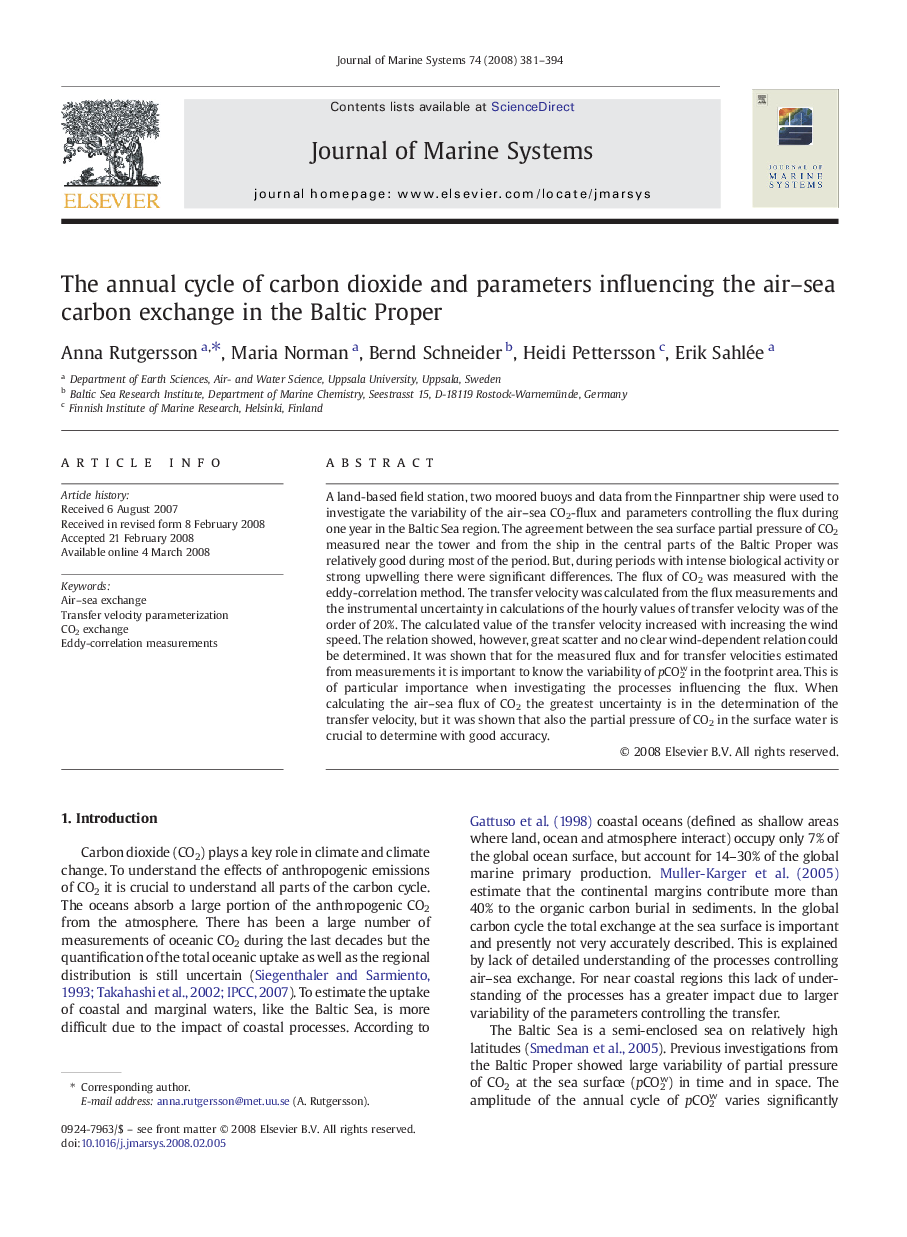| Article ID | Journal | Published Year | Pages | File Type |
|---|---|---|---|---|
| 4549008 | Journal of Marine Systems | 2008 | 14 Pages |
A land-based field station, two moored buoys and data from the Finnpartner ship were used to investigate the variability of the air–sea CO2-flux and parameters controlling the flux during one year in the Baltic Sea region. The agreement between the sea surface partial pressure of CO2 measured near the tower and from the ship in the central parts of the Baltic Proper was relatively good during most of the period. But, during periods with intense biological activity or strong upwelling there were significant differences. The flux of CO2 was measured with the eddy-correlation method. The transfer velocity was calculated from the flux measurements and the instrumental uncertainty in calculations of the hourly values of transfer velocity was of the order of 20%. The calculated value of the transfer velocity increased with increasing the wind speed. The relation showed, however, great scatter and no clear wind-dependent relation could be determined. It was shown that for the measured flux and for transfer velocities estimated from measurements it is important to know the variability of pCO2w in the footprint area. This is of particular importance when investigating the processes influencing the flux. When calculating the air–sea flux of CO2 the greatest uncertainty is in the determination of the transfer velocity, but it was shown that also the partial pressure of CO2 in the surface water is crucial to determine with good accuracy.
